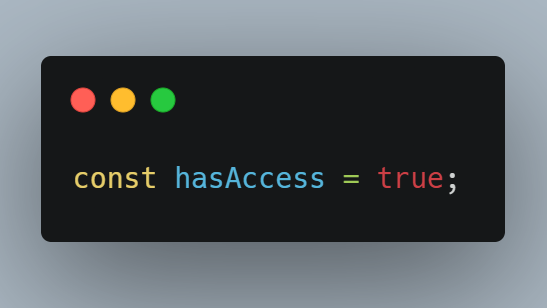JavaScript powers the modern web, but have you ever wondered what happens behind the scenes when you write that simple line of code? Let’s demystify the magic of the V8 engine – the powerhouse that makes JavaScript tick.
The Language Barrier Picture yourself writing a straightforward piece of code:

As developers, we instantly understand this means setting up a boolean flag for access control. But here’s the fascinating part – your computer has no clue what this means!
Computers only understand binary (those endless streams of 1s and 0s), making JavaScript about as comprehensible to them as a recipe written in emojis would be to a chef. This is where JavaScript engines step in to bridge this fundamental communication gap.
Enter the V8 Engine The story of V8 begins in 2008 with Google facing a unique challenge. They were developing Google Maps, an application that demanded smooth zooming and panning across the globe. The existing JavaScript engines weren’t cutting it – they were too slow for the interactive experience Google envisioned.
This necessity drove Google to create something revolutionary: the V8 engine. Think of it as a highly sophisticated translator that takes our human-readable JavaScript code and transforms it into lightning-fast machine instructions that computers can execute.
The Impact V8’s introduction was a game-changer. It didn’t just make Google Maps run smoother; it revolutionized what was possible on the web. Today, V8 powers both Chrome browser and Node.js, forming the backbone of countless web applications we use daily.
But V8 isn’t alone in this space. Mozilla’s SpiderMonkey and Microsoft’s Chakra are other notable engines, each with their own approach to the same fundamental challenge: making JavaScript fast and efficient.
The Translation Process When you write JavaScript code, the engine performs a complex dance of parsing, compiling, and optimizing your code. It’s like having a master interpreter who not only translates your instructions but also finds ways to deliver them more efficiently.
Understanding how these engines work isn’t just academic knowledge – it helps us write better, more performant code. When we grasp what’s happening under the hood, we can make more informed decisions about our code structure and optimization strategies.
The Evolution Continues JavaScript engines continue to evolve, getting faster and more sophisticated with each iteration. They’re constantly being refined to handle new language features and optimize performance even further.
For developers, this ongoing evolution means we can build increasingly complex applications while maintaining the speed and responsiveness users expect. It’s a testament to how far web development has come and a glimpse of where it’s heading.
Next time you write a line of JavaScript, remember there’s an incredible piece of engineering working tirelessly to turn your code into something meaningful for the computer. It’s this hidden layer of translation and optimization that makes modern web development possible.
The journey of understanding JavaScript engines is fascinating, and it’s just beginning. As we continue to push the boundaries of what’s possible on the web, these engines will keep evolving, enabling us to build even more amazing things.
Happy coding! 🚀